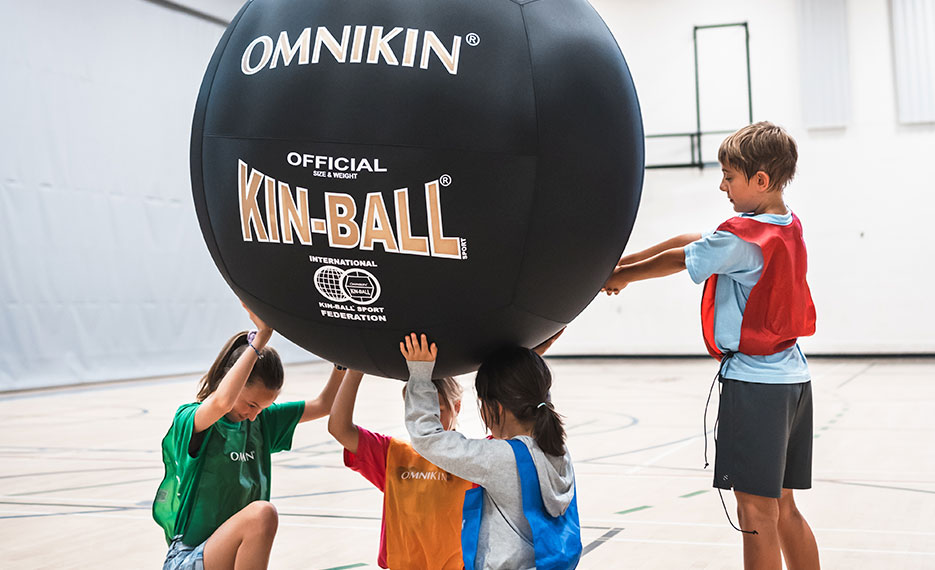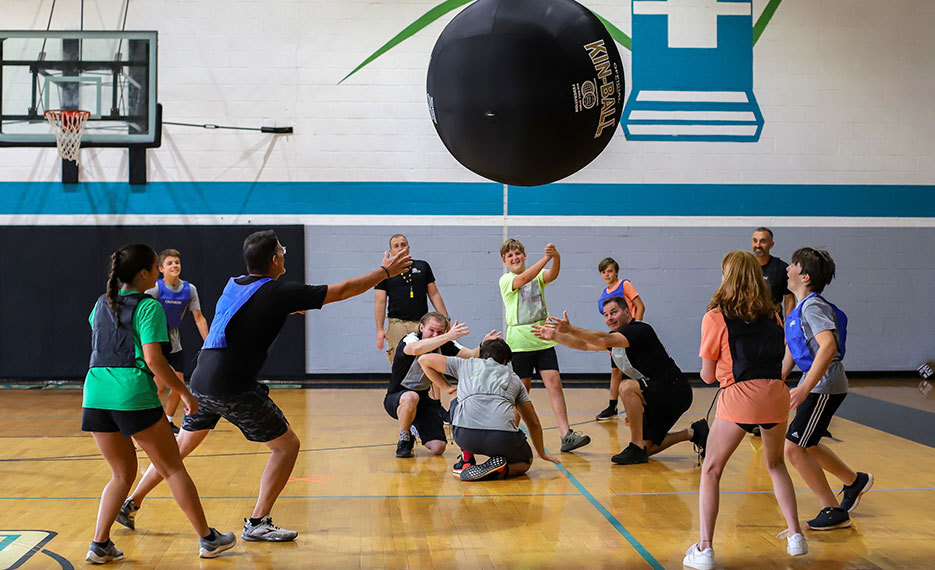Product
Balls
Size
33" (0.84 m) to 48" (1.22 m)
Age group
8 years old and +
Participants
12-30 participants
Difficulty
Advanced
Activity Type
Team
Want the complete rules for this sport?
The perfect indoor or outdoor PE game
Tired of the same old PE games? Introduce Kin-ball to your class. This physical education game can be played both outdoors and indoors, is inclusive, and requires little preparation time. It’s a great way to improve students coordination.
Description
Kin-ball is played with three teams of four players on the field and one ball. One team in possession of the ball (offensive) designates the team that will have to recover the hit. If the named team succeeds in catching and controlling the ball, no points are given, and that team has 10 seconds to throw it back to the next team. If the ball is dropped, the other two teams score a point, and the team that dropped the ball restarts the game.
Objective
The benefit of this physical activity is its ability to improve hand-eye, eye-foot, hand-foot coordination and cardiovascular capacity as participants work together to catch the ball.
How the game is played
When the game starts, one team has possession of the ball. Three players from that team position themselves in a triangle to support the ball, and the fourth (who will be the hitter) will then proceed to designation by calling out “OMNIKIN,” followed by the colour of the team they want to attack. They will then hit the ball inside the boundaries of the game area, hoping that the named team will not be able to catch it. The players of the named team will have to catch the ball, control it, and take the triangle position in order to allow one of their own to make the hit within 10 seconds. The play continues until one team drops the ball or commits a fault, in which case both other teams will receive a point. The team with the most points at the time the period ends (if played by time) or reaching the target score first (if played by points) wins the period/game. There are several other rules that apply, see the official rules for more information.
Adaptations/variations
In the case of a very large group, it is recommended that a fifth player per team be added to the field rather than adding a team to allow participants to really enjoy the sport.
Teaching tips
Divide the group into three teams and explain in order: how the sport works (three teams, game boundaries, all team members must touch the ball when hitting), the name, how to hold the ball individually (knee down, buttocks on heel, torso and head down, arms extended with hands supinated) and collectively (large triangle), and how to hit (push-up pitch, two-armed hit). Then, explain defensive positioning (square around the ball). Conduct directed play by holding the ball for one or two simulated pitches before letting the participants play. Use soft and flexible refereeing by explaining other rules (designation fault, missing a contact downward angle hit, throw that is too short).
Want to learn this game with a certified trainer?
Our Workshops


